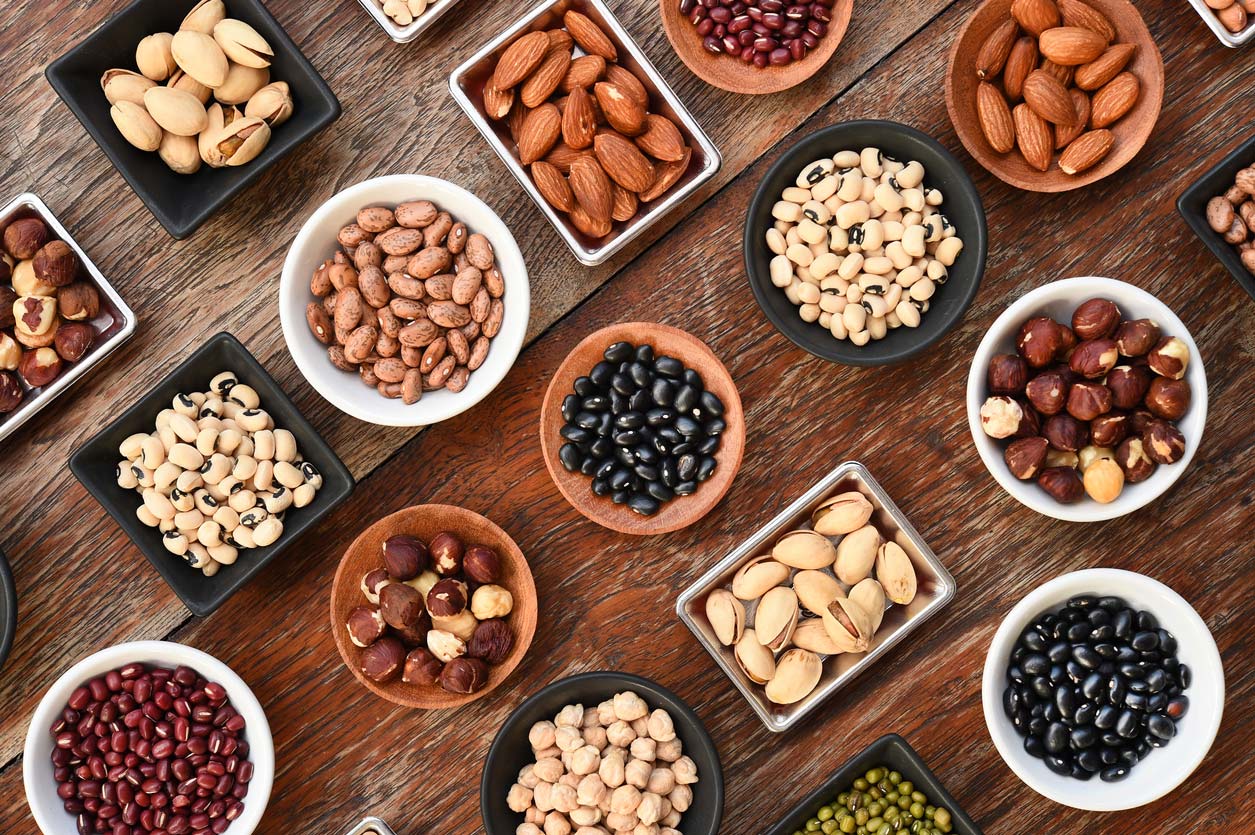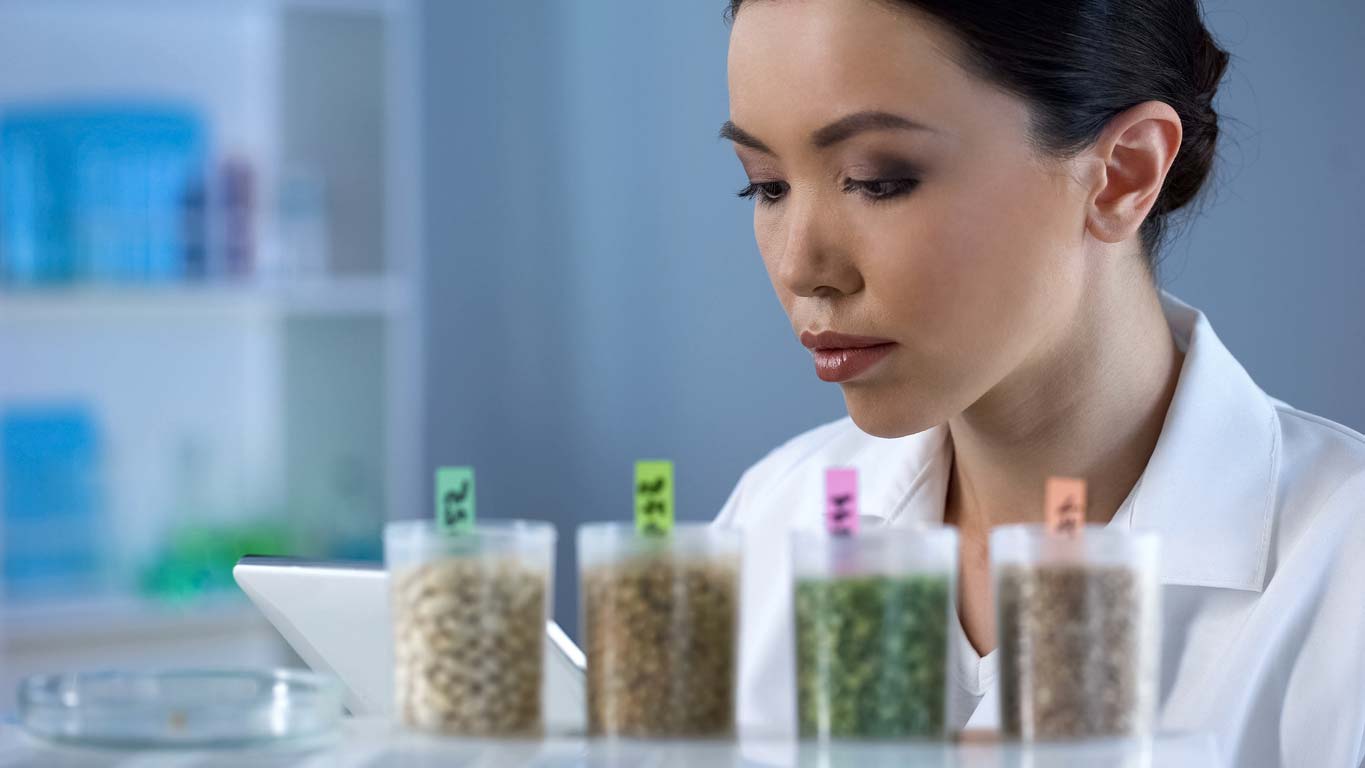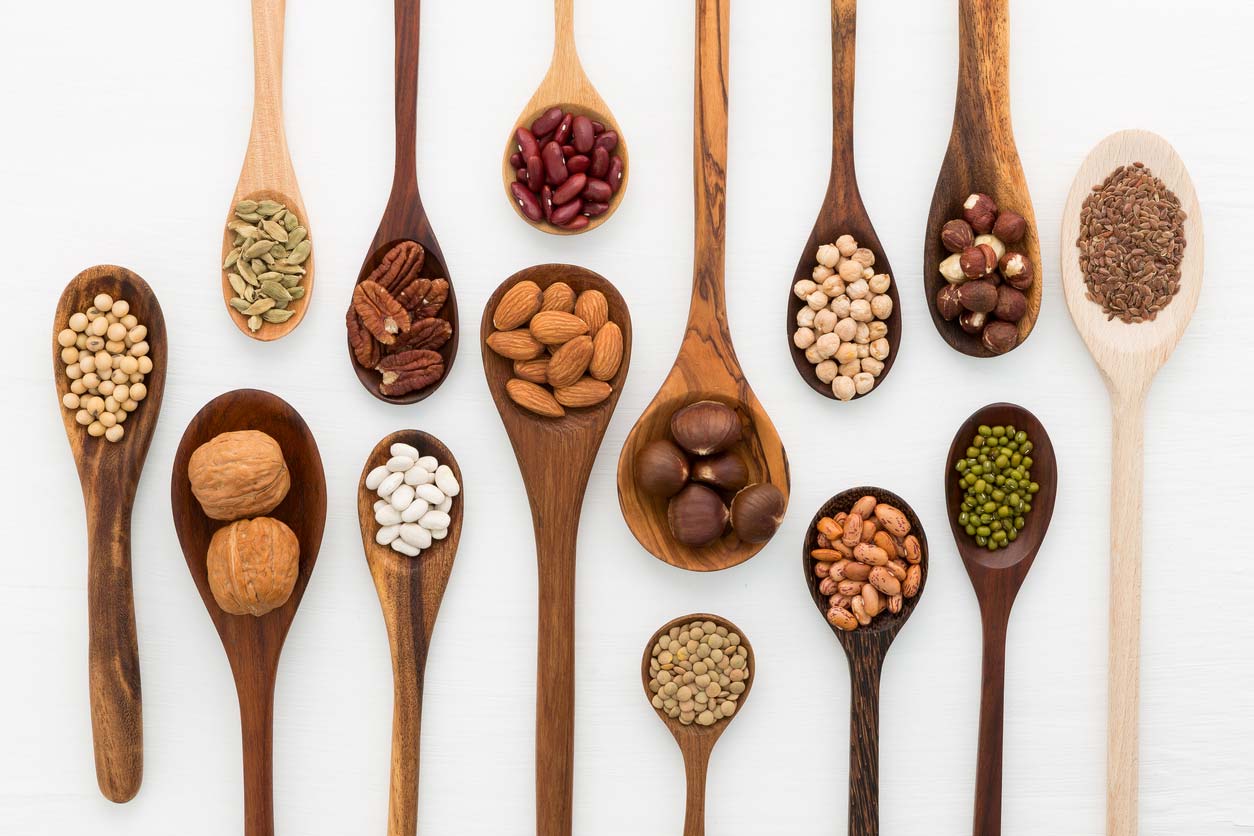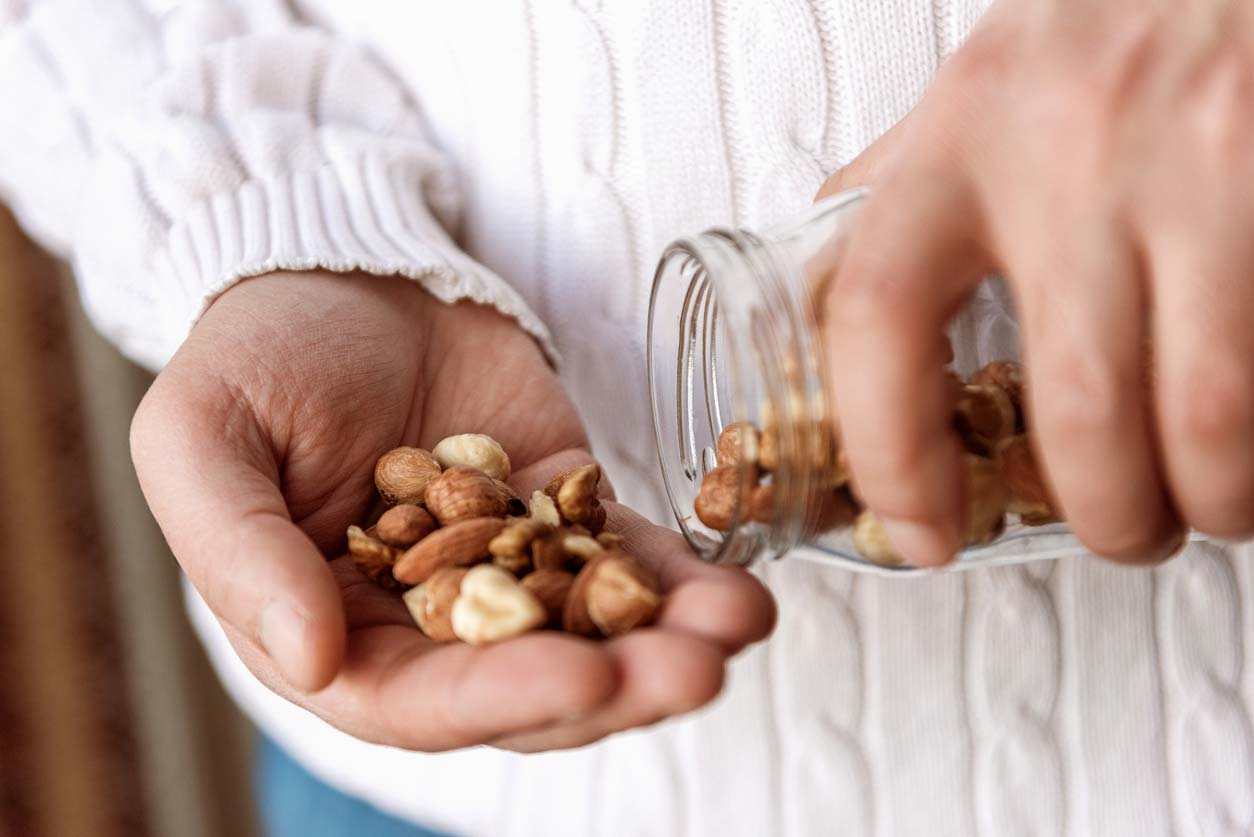Humans are healthier when eating whole plant foods. The scientific evidence for this statement is overwhelming. But that hasn’t stopped people from claiming that some of the healthiest foods on the planet — the ones most highly correlated with longevity, like grains, beans, nuts, and seeds — are actually bad for you.
One of the biggest culprits, according to many of these nutritional “revisionists,” is phytate, which they smear as an “antinutrient” (which is a most misleading term, as you’ll soon see). By this, they mean that the compound prevents the absorption of other nutrients found in plants. So what’s the scoop? Are whole grains, beans, nuts, and seeds the cornerstones of a healthy diet? Or are they stealth delivery mechanisms for a chemical that can interfere with the digestion of essential nutrients?
This article dives into phytate myths and facts so that you can make informed decisions about whether you need to avoid them or not.
What Are Phytates?

Plant seeds store the mineral phosphorus in a naturally occurring compound called phytic acid. When you eat plant foods with phytic acid, it binds to other minerals in your digestive tract, like calcium and iron, and creates what are known as phytates.
The main types of foods that contain phytic acid include:
- Beans
- Lentils
- Whole grains
- Nuts
- Seeds
You may be looking at that list and wondering, “Hey, but aren’t those foods typically recommended as part of a whole foods, plant-based diet? What’s the deal? Are phytic-acid-rich foods leaching important minerals out of my body? Should I cut back, or stop eating them entirely?”
The Controversy Over Phytates

The key to the phytic acid controversy revolves around its chelating properties. “Chelation” just means the binding of a metal ion to an organic molecule. When you eat food that contains a mineral like zinc, iron, or calcium, and you also consume phytic acid, the phytic acid will bind to — or chelate — the mineral, forming one of the phytates. Phytic acid and phytate are sometimes used interchangeably to refer to this chelation process.
The human body lacks the phytase enzyme that can break down phytates, so we can’t digest and absorb the nutrients bound up in them very well. That’s the basis of the “antinutrient” label. For example, one study showed 13% of magnesium and 23% of zinc were absorbed in the presence of phytic acid, as opposed to 30% without.
A diet high in phytic acid could, detractors argue, lead to nutritional deficiencies over time. At least, that’s the theory. The question is, does it?
Let’s examine the science.
What the Science Says About “Antinutrients”

So-called antinutrients are naturally found in many plant-based foods. Some other common plant compounds that fall into this category include tannins, lectins, and oxalates.
Phytic acid’s primary purpose in plants is to protect them from bacterial infections and insects. In the human diet, phytates can affect the absorption of important nutrients, such as zinc, iron, and calcium, if they’re eaten in the same meal.
But how much nutrient loss actually occurs in our diets as a result of “antinutrients”? The answer is: it depends. The degree of chelation depends on factors like pH and the proportion of phytate to metal ions. Plus, the effects of phytates likely vary among individuals, based on their metabolism and how the food in question is cooked and prepared.
So, the amount of nutrient loss depends on a variety of factors. But in any case, it’s not much of a loss. A 1994 review of trace elements in vegetarian diets from around the world didn’t find iron or zinc deficiencies in those people eating high concentrations of foods containing phytic acid.
Could the human body be adapting to the presence of antinutrients by increasing the absorption of these minerals in the gut? Maybe. And if so, this could be a remarkable example of intelligent dietary evolution.
But, as we’ll discuss a little later, by the time most foods high in phytic acid get to our plate, they may no longer contain enough to cause problems. And phytates may actually bring you significant health benefits, too.
Health Benefits of Phytates

Calling phytic acid an “antinutrient” is unfair and misleading because the foods that tend to be high in phytic acid bring enormous health benefits. And it’s not just that these foods are so good for us that their benefits “outweigh the harms” of phytic acid. Phytates themselves — despite reducing the absorption of certain nutrients — offer significant health benefits.
1. Phytates may reduce the risk for cancer.
Phytates show impressive anticancer activity by inhibiting the growth and spread of cancer cells. They also appear to have immune-boosting effects by amplifying the activity of natural killer cells that target harmful cancer cells in the body. Additionally, phytates can prevent the formation of new blood vessels that would otherwise feed tumors, causing them to either die or return to normal, healthy cells.
2. They may prevent heavy metal toxicity.
The chelation effect of phytate isn’t all negative. In fact, one study showed that phytic acid was able to absorb cadmium, copper, lead, nickel, and zinc heavy metal ions from an aqueous solution. Many scientists believe that phytic acid can bind to toxic heavy metals and help your body to excrete them. And some research suggests that phytic acid could help prevent neurodegenerative diseases, largely by binding heavy metals that are toxic to the brain.
3. They may act as an antioxidant.
Antioxidants are compounds found in plant foods that fight off harmful free radicals that can damage your cells and lead to disease. When phytic acid binds to minerals in the gut, it creates phytates, which turn out to be potent antioxidants. Animal studies have found that phytic acid added to drinking water may offer a promising therapeutic option for Alzheimer’s disease by protecting the brain from oxidative damage. Specifically, this treatment offered complete protection against amyloid plaque precursors that could harm rats’ brains.
4. They may protect against kidney stones.
Phytates may also prevent calcification in bodily fluids and inhibit the crystallization of calcium oxalate and calcium phosphate into kidney stones. The effects are so promising that some researchers suggest using phytate to treat kidney stones. In fact, some large observational epidemiological studies have shown an inverse association between phytate intake and kidney stone formation among women.
5. Phytic acid helps your body produce inositol.
When phytic acid reaches your digestive tract, it interacts with bacteria and produces a substance called inositol. Inositol helps your liver process fats and has a role in muscle function. In addition, it may help to lower blood triglyceride levels, blood pressure, and blood sugar.
The bottom line is that foods high in phytic acid are some of the healthiest and most nutritious foods you can eat. They’re high in vitamins, minerals, antioxidants, and fiber. And when you include nuts, seeds, whole grains, and legumes as part of a varied and balanced diet, they contribute to your overall health and help prevent disease.
Who Should Avoid or Limit Phytic Acid Intake
Phytic acid occurs naturally in healthy, whole plant foods, so it doesn’t make much sense to stop eating it altogether. Still, there may be certain groups of people who would benefit from knowing where phytic acid is most present in their diet and understanding how to limit it or minimize unwanted effects.
People who may want to limit phytic acid intake include:
1. Individuals who are at high risk for nutritional deficiencies and related disorders.
Conditions like osteoporosis with calcium deficiency, anemia with iron deficiency, or zinc deficiency could worsen if phytates are allowed to further reduce mineral bioavailability. People who fall into this category should diversify their diets and not include high-phytate foods in all meals, consider supplementation of key minerals, and prepare foods with phytic acid in ways that minimize its effect. See the next section for details.
2. Individuals who have malabsorption disorders.
Malabsorption disorders make it harder to absorb nutrients to begin with. And a high-phytate diet could make this challenge worse. If you fall into this category, you may want to reduce phytic acid intake in your diet and increase your overall intake of minerals. Your healthcare provider may advise you to take mineral supplements as well.
3. Individuals who are at a higher risk of malnutrition.
This may include people who suffer from an eating disorder or who lack access to adequate food. A diet that is based mostly on calories from limited food sources like rice and beans, without much variety, can be very high in phytic acid and low in other nutrients that could otherwise help prevent malnutrition.
How to Reduce Phytic Acid in Food

Sprouting, cooking, baking, processing, soaking, fermenting, and yeast leavening all help to destroy phytic acid and allow for increased mineral availability. So for many foods containing phytates, the way you would regularly prepare them is often enough to eliminate or significantly reduce phytic acid content. For example, one study on green cowpea pods found that pressure cooking them for three minutes and then boiling them for 15 minutes improved nutrient absorption and reduced antinutrient effects by over 90%.
But, if, for any reason, you want to deliberately reduce your phytic acid intake, there are some simple steps you can take (without having to stop eating some of the healthiest foods on the planet). Some of these steps are health-promoting for other reasons, too.
One study found that pre-soaking reduced the phytic acid concentration in quinoa by about 70%, while more than doubling iron solubility. Other research indicates that the use of sprouting and lactic acid fermentation can almost completely eliminate phytic acid from white sorghum and maize. Other studies also tell us that soaking beans for at least 12 hours, then rinsing them and cooking them in fresh water, reduces phytic acid levels by 60%.
If you’re a fan of homemade bread or fermented foods, phytate levels in wheat drop dramatically when it’s made into leavened bread. In one study, yeast fermentation brought phytate levels down by 32%, while sourdough fermentation brought them down by 62%.
Food combining is also another way to mitigate the effects of phytic acid. For example, mineral-absorbing enhancers, such as garlic and onions, can increase the bioavailability of iron and zinc in plant foods. And by including sources of vitamin C with your high-phytate meals, you can boost iron absorption and negate the iron-inhibiting effects of phytates.
Don’t Fear the Phytates

So although phytic acid can chelate with important minerals in your digestive system, the impact of phytates is mostly minimal. When included with a variety of other whole plant foods, there’s little reason to avoid foods high in phytic acid. If you have concerns about zinc, iron, or calcium, you may want to increase your intake of these minerals or not ingest them with high-phytate foods. Or you may want to make nutrients more bioavailable by cooking or fermenting phytic acid-containing foods. In some cases, mineral supplementation may become necessary. But one thing you probably don’t want to do is to eat fewer legumes, whole grains, nuts, or seeds. After all, thousands of studies have shown that for most people, these are among the healthiest foods on the planet.
Tell us in the comments:
- What do you think about the phytate controversy?
- What are some sources of phytic acid that you eat?
- How do you prepare whole plant foods in order to reduce their phytate content?
Feature image: iStock.com/thananya



